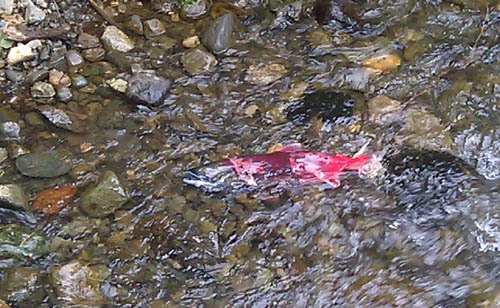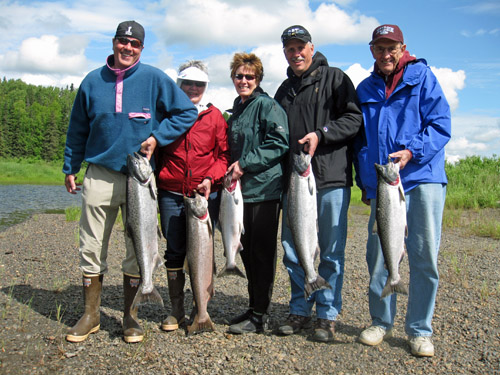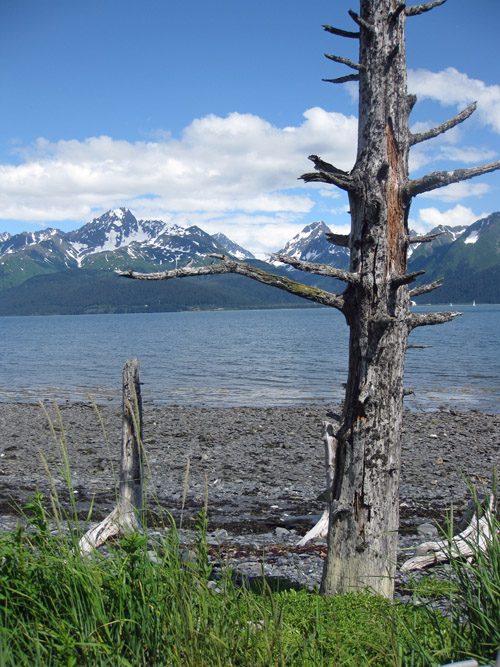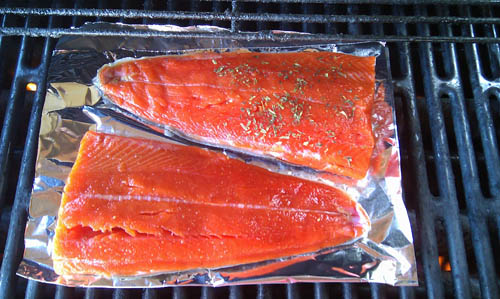
There I stood, looking out over the world, wondering what to make of it.
The nation’s credit rating – according to S&P anyway – went from AAA to AA+. What happened to AAA-? I overheard Master say to a friend before the so-called crisis was averted, “Just watch, if we default, the Dow will go up.” Everyone who heard this chuckled. Quietly he predicted the opposite too, that the Dow would plummet if the crisis was averted, but he didn’t say this out loud. Too bad, his foresight would never again be questioned. Of course, we will never really know the direction the Dow would have gone had the crisis not been averted, but in any case the unexpected reaction by investors underscores the caprice of markets. Which was kinda the point.
Our latest batch of house guests arrived in July. First Kevin, aka “Kdog”, was here for a brief visit, just enough time to get in a mountain bike ride on the Lost Lake trail, a favorite on the Kenai Peninsula. Here they are, he and Master, after the gnarly climb (1820′) to the summit in front of Lost Lake, which evidently isn’t.
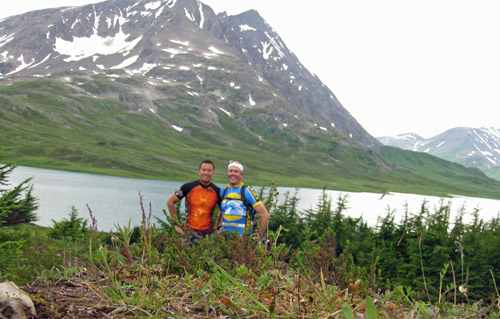
Lucy and I were in the car with Mom, intending to pick them up on the other end of the 15 mile trail and then spend the night in Seward. But the alternator failed and left us stranded at the base of Turnagain Pass. Mom’s coolheadedness averted an accident. So they descended the same side of the trail they had just climbed, got in Master’s car and back to Anchorage they went. We had to be towed. Two days later, after Kdog left, the next guests arrived, Bob ‘n Hope from Cleveland, who, not surprisingly, we refer to by the monomial “BobHope”. Just before they arrived Master bought a new car – Subaru Outback (6-cyl/256 HP!) – because, well, the Mercedes was showing her age (221K miles). Eventually, more money would need to be spent to keep her going another 200K, but when cars get that old you start to question if your affections aren’t misplaced. Sold the old girl to a young woman for a $1000. She seemed delighted to have her. Don’t ask me why cars are “shes”, it’s just always been that way.
Anyway, down to Seward we all went, us, BobHope, the repaired Honda, and the new Subaru. Biblical rain for two days but we had fun. Presently BobHope and Mom are on their way home from Denali National Park. Wildlife seen: lynx, squirrels, fox, moose, caribou and many bears. No wolves, though. On their drive home they experienced an unseasonable and convincing snowfall! By comparison, in Anchorage, it’s sixty degrees. Go figure.
It’s hard to square finicky weather with the tocsin of global warming (GW). We get “literature” in the mail warning us that polar bears are in peril due to GW. Most of that mail, as well as relevant web sites, are emphatic that less sea ice and shortened winters have a “big” impact on polar bear survival. But evidently the biggest threat to polar bears has been and continues to be hunting, not GW. In Canada alone, for example, it is estimated that 700 bears are killed by hunters each year. Given the estimate of 20-25K bears globally, and assuming an additional 300 bears are killed by hunters annually elsewhere in the world besides Canada (seems reasonable), then hunting alone would wipe out the species in about a quarter century. I have not seen an estimate of the number of polar bears that die each year due to the effects of GW. Supposedly, polar bears have the slowest turnover (birthrate) of any mammal – they breed only five times per lifetime and litters are typically only two cubs. Motherless cubs face certain death. So killing bears, more so than other mammals, really threatens their long term survival. If the concern of the people who send us this “literature” by mail were really for the polar bears, I would expect they would advocate much more loudly for an end to hunting polar bears worldwide, instead of unquantified claims that GW is the biggest threat to their survival.
Are there not already too many real problems in the world without imagining new ones?






